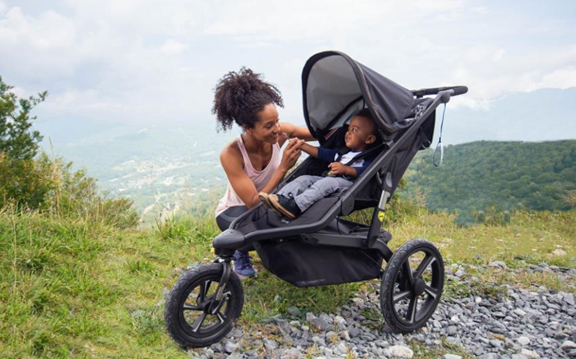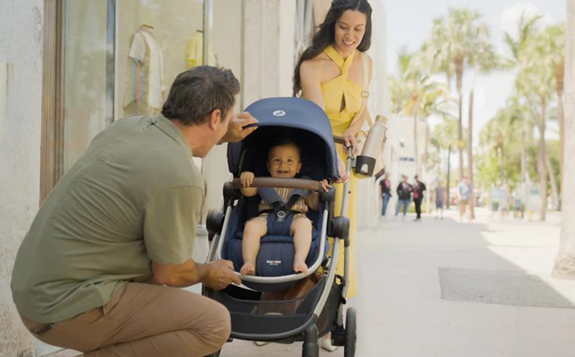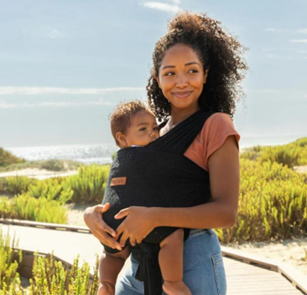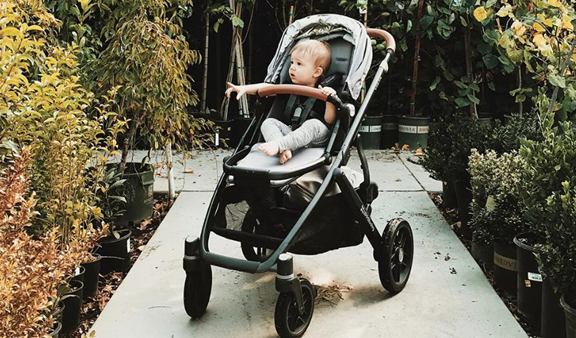As a parent, one of the exciting milestones in your baby’s development is when can baby sit in stroller. This moment allows you greater freedom and gives your little one a new perspective on the world. Deciding on the right time for this transition involves understanding various developmental milestones and ensuring your child’s safety. In this guide, we will explore these milestones, identify signs that your baby is ready, and provide tips for choosing the right stroller and ensuring safe use.
Understanding Developmental Milestones
Babies develop at their own pace, but certain milestones can provide insight into when they might be ready to sit in a stroller safely.
Head and Neck Control
Head and neck control is a fundamental developmental milestone. Newborns lack the strength to support their heads and necks, which is why they often need to be in fully reclined positions. Around three to four months, babies typically begin to develop stronger neck muscles, allowing them to hold their heads up independently for short periods. This development is crucial since it means a child can better withstand the small jolts and movements that come with stroller rides.
Sitting Independently
By the age of six to nine months, many babies start sitting up with minimal support. This ability is critical for moving to a more upright sitting position in a stroller. A baby who can sit independently without toppling over demonstrates the necessary muscle control and balance. This milestone ensures that your baby can remain safe and comfortable in a stroller that is not fully reclined.
Identifying Signs of Readiness
Recognizing when your baby is ready for a stroller involves a few observational and practical tests.
Observational Tests for Readiness
One way to ascertain readiness is by observing your baby’s head and neck control. If your baby can lift and turn their head easily during tummy time, they’re showing signs of improved muscle strength. Additionally, observe their ability to sit without assistance. Place them in a seated position and see if they can maintain balance without support. These observations can provide confidence that your baby is ready for the new experience of stroller rides.
Postural Balance Test
You can also conduct a simple postural balance test at home. Sit your baby on your lap or a soft surface and gradually reduce the level of support you provide. If your baby can remain upright and stable for more than just a few seconds, they likely have the necessary control to sit securely in a more upright stroller seat. This balance test helps confirm that your baby will be safe and comfortable during stroller rides.
Choosing the Right Stroller for Each Stage
With numerous stroller options available, it’s essential to choose the right one for your baby’s age and developmental stage.
Strollers for Newborns (0-6 months)
For newborns, opt for strollers that offer a fully reclining option. These strollers ensure that your baby remains in a flat, supported position, which is vital as they have very little neck and head control. Strollers with adjustable backrests are ideal because they can be adapted as your baby grows. Also, ensure the stroller has ample padding to provide the necessary support and comfort for your newborn.
Transitioning to Upright Strollers (6+ months)
Once your baby reaches six months and starts showing signs of independent sitting, you can begin transitioning to a stroller that allows a more upright position. Choose strollers that offer multiple reclining positions so you can gradually adjust the seat as your baby’s sitting ability improves. Strollers with five-point harnesses provide additional safety, keeping your baby secure while they explore the world from an upright position. Always prioritize strollers with adjustable harness systems to accommodate your growing baby.

Safety Tips for Stroller Use
Ensuring your baby’s safety while using a stroller is paramount. Here are some key safety tips:
Proper Harness Usage
Always use the stroller harness to secure your baby. A five-point harness system is ideal as it straps your baby in at the shoulders, waist, and between the legs, providing comprehensive security. Check that the harness is snug but not too tight. Ensure that your baby cannot easily slip out or get tangled.
Choosing the Right Stroller Features
Select a stroller with safety features such as brakes, a stable base, and a sunshade. Brakes are essential for preventing the stroller from rolling away. Stability is provided through a wide base that prevents tipping. A sunshade is crucial for protecting your baby from harmful UV rays during outdoor strolls. Additionally, consider strollers with adjustable handles for parental comfort and easy maneuverability.
Conclusion
Determining when can baby sit in stroller safely involves understanding their developmental milestones, observing signs of readiness, and choosing the appropriate stroller. By ensuring your baby has the necessary head, neck, and postural control, you can make stroller rides a joyful and safe experience. With the right stroller and adhering to safety precautions, both you and your baby can enjoy more outings and explore the world together.
FAQ
When can babies sit in a stroller in an upright position?
Babies can typically sit in a stroller in an upright position once they have developed sufficient head and neck control and can sit independently, usually between six to nine months old.
What are the signs that my baby is ready to sit in a stroller?
Key signs include the ability to hold their head up steadily, sitting without support, and maintaining balance while seated. Observing these abilities indicates your baby’s readiness.
Is it safe to use a stroller with my 3-month-old?
Yes, but ensure that the stroller is designed for newborns and offers a fully reclined seat position. Newborns lack the neck and head control for upright seated positions, so a flat, supportive surface is essential for safety.




